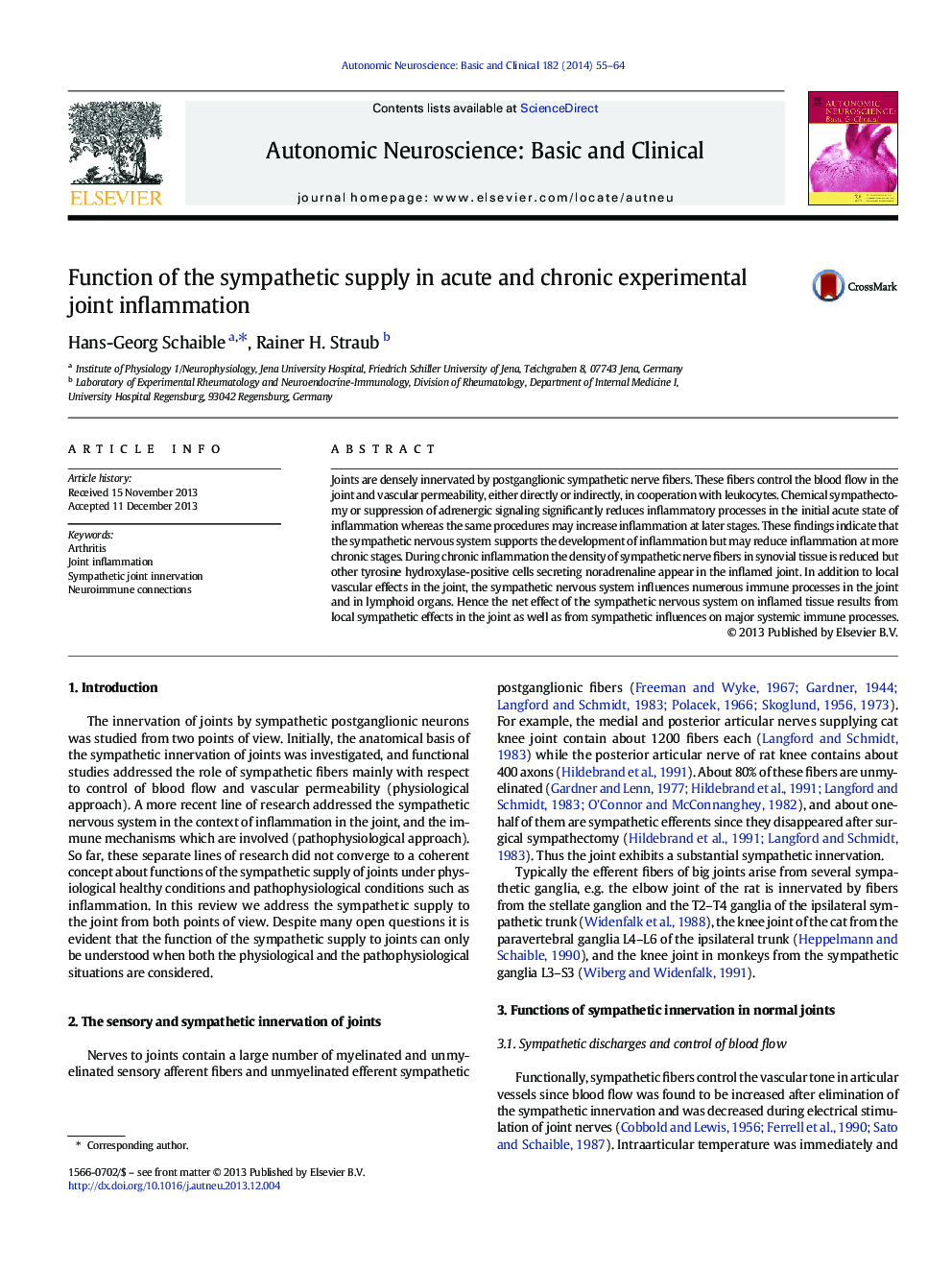| Article ID | Journal | Published Year | Pages | File Type |
|---|---|---|---|---|
| 3034603 | Autonomic Neuroscience | 2014 | 10 Pages |
Joints are densely innervated by postganglionic sympathetic nerve fibers. These fibers control the blood flow in the joint and vascular permeability, either directly or indirectly, in cooperation with leukocytes. Chemical sympathectomy or suppression of adrenergic signaling significantly reduces inflammatory processes in the initial acute state of inflammation whereas the same procedures may increase inflammation at later stages. These findings indicate that the sympathetic nervous system supports the development of inflammation but may reduce inflammation at more chronic stages. During chronic inflammation the density of sympathetic nerve fibers in synovial tissue is reduced but other tyrosine hydroxylase-positive cells secreting noradrenaline appear in the inflamed joint. In addition to local vascular effects in the joint, the sympathetic nervous system influences numerous immune processes in the joint and in lymphoid organs. Hence the net effect of the sympathetic nervous system on inflamed tissue results from local sympathetic effects in the joint as well as from sympathetic influences on major systemic immune processes.
